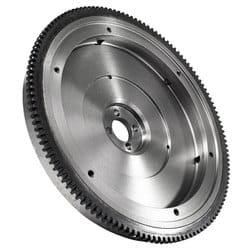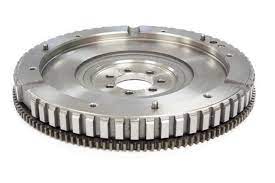Here in this article we are going to discuss about one of the most important and vital component in mechanical engineering terms which is related to machines, primarily to the IC engine or any other automobiles. It is none other than ‘Flywheel.’
We will try to find out each and every informations regarding flywheel that what is a Flywheel, its functions, applications and equations etc.
What is a Flywheel ?
Table of Contents
Flywheel is a device that acts as a energy reservoir by storing the excess amount of energy and supplying this stored energy whenever required. Here excess energy means that when the supply of energy is more than the required for an operation. Similarly supplying the stored energy means supplying the energy whenever the supply power touch not adequate with the needs.
In internal combustion engines, the torque on the crankshaft fluctuates during the cycle of operation. By consequences of which a change in angular velocity of the shaft occur. For obtaining the uniform torque, an inertia mass is provided at the end of the shaft which is well widely known as ‘Flywheel.’
Existence of Flywheel in IC engines
The flywheel is mounted on one side of the crankshaft of the transmission line, reducing the imbalance of rotating power on the crankshaft. In the case of a four-stroke engine, in each cylinder, a single power stroke is generated by two crankshaft turns. The flywheel retains this energy as kinetic energy and provides the same for other strokes (pressing, pulling, and exhaust) so that the engine can run continuously. Therefore, in the absence of a flywheel, the rotation of the crankshaft has become pulsating and when the pulse interval of the power stroke becomes as long as when you are in a state of inactivity, the engine stops.
The flywheel attached to the crankshaft must be balanced in a flexible manner. The uneven coupling force causes the crankshaft vibration and heavy load on the crankshaft and bearing.
Special note :
• Flywheel doesn’t maintain constant speed, it simply reduces fluctuation of speed.
• A Flywheel can never be used to regulate the speed variation or supply the fuel for the same by varying load conditions.
Functions and applications of a Flywheel

• Saves significant amounts of energy and releases them when needed.
• Flywheel is sometimes used to provide periodic power pulses. Bringing power beyond the machine by getting power on the flywheel over time, and then releasing them as fast as Riveting machines.
• Reduce torque fluctuations, make uniform crankshaft.
• Flywheel allows the machine to continue using the dead area.
• Provides engine crankshaft balance.
• Flywheels help to overcome short-term overflow, for example, engine startups from the rest.
Equations related to Flywheel for solutions of problems
- Work done per cycle = T (mean) × θ
Here, θ=2π for two stroke engine
θ=4π for four stroke engine - Maximum fluctuation of energy
First of all, Kinetic energy = 1/2 × I × w^2
Here, I = mr^2
w = Angular velocity
I = The moment of inertia of the mass about the center of rotation.
And, (∆E)max. = I × (Wmean)^2 × Cs
Here, Cs = Wmax. – Wmin. / Wmean
- Coefficient of fluctuation of energy
Ce = Emax. – Emin./ Wcycle.
That was all about the Flywheel, it’s functions, applications and equations. Hope you all like this content. If this was helpful to you then kindly do share it with your friends. Also do follow us on social media platforms to be aware of every mechanical engineering things happening all around
FAQ:-
What is the main function of a Flywheel ?
Flywheel mainly used to maintain the fluctuation of speed.
Does a Flywheel needed in cars ?
Yes, definitely. A car must get a Flywheel.
What are the types of Flywheel ?
These are the main types of Flywheel :
Solid disc flywheel.
Rimmed flywheel.
High-velocity flywheel.
Low-velocity flywheel.
What are the symptoms of a bad flywheel ?
The most common symptom of a bad flywheel is bad noises at idle
